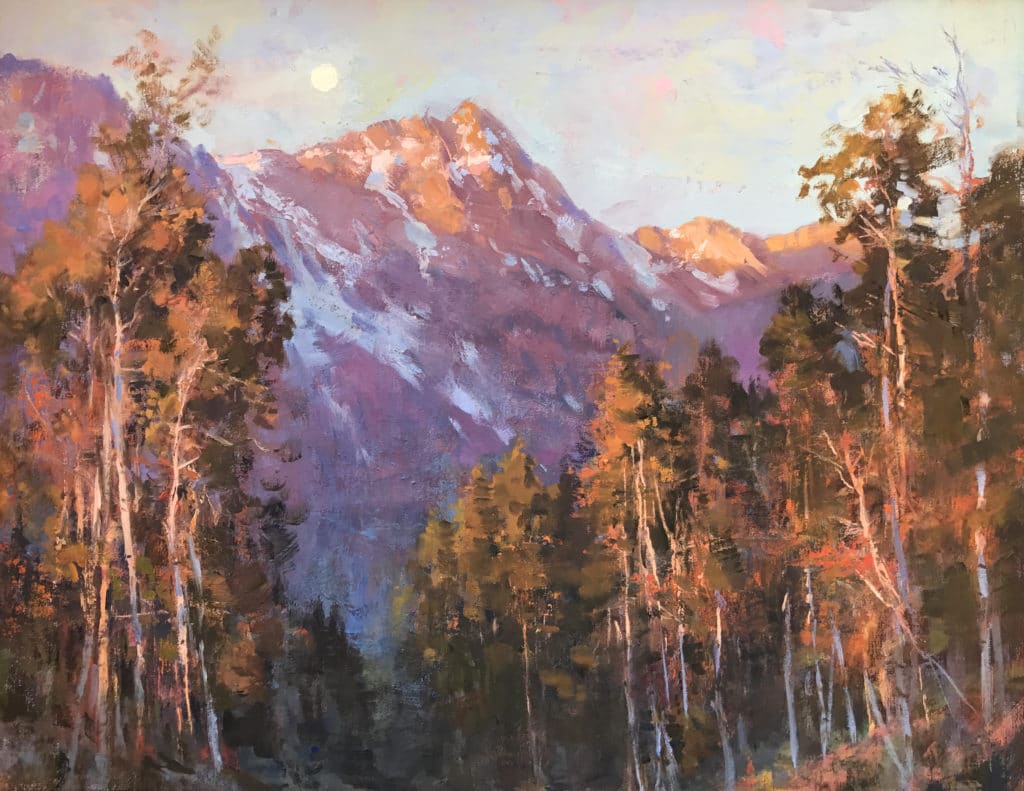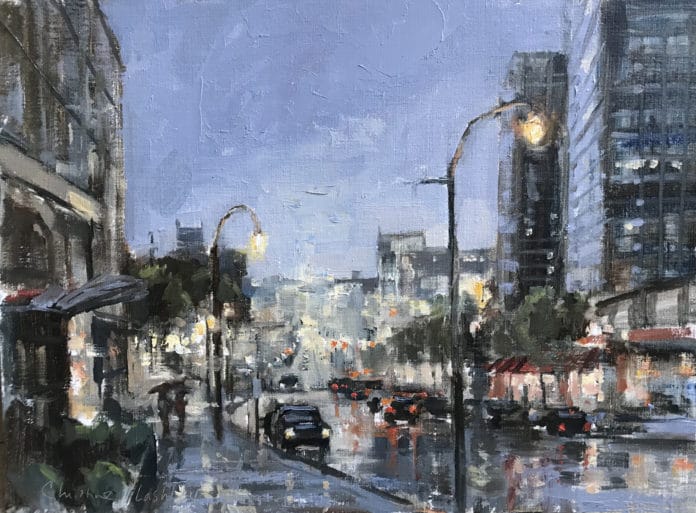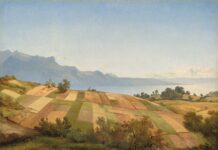Virginia artist Christine Lashley emphasizes contour shapes and high contrast to lend visual strength to her plein air compositions.
By Robert K. Carsten
Influenced by world culture, Christine Lashley grew up in different regions of the United States and abroad, spending her high school years in Paris. “My mother was an artist, so we often visited museums and galleries wherever we were,” recalls Lashley, who later attended Washington University in St. Louis, Missouri, majoring in graphic communications. “The department was built on a strong foundation of illustration and emphasized realism, which is what I wanted,” she says. After graduation, she worked as a graphic designer and found work with a company painting realistic murals and backdrops for clients like the Portland Ballet. The company eventually closed its doors, however, and Lashley and her husband decided it was time to start a family.
“I chose to be a stay-at-home mom,” she says, “and that proved to be fantastic for my art career. I began doing watercolor portraits of my children and their friends and, thanks to word of mouth, became a children’s portrait artist. I also started giving art lessons after my children went to bed and have now taught for 20 years.”

INTRODUCTION TO A NEW MEDIUM
As her kids grew older, Lashley began exploring painting with oils. Because she had toxicity concerns for her family and was allergic to solvents herself, she opted for the water-mixable variety. Over the years, the artist’s process has evolved to also include traditional oils. “I can work solely with water-mixable oils, but I prefer the increased viscosity and buttery feeling of traditional oils,” she says. “Plus, the paint blobs stay wet longer on the palette during plein air events.” She uses mostly M. Graham oils, which are made with walnut oil and, according to the artist, feel “extra buttery.” She says, “The more I’ve painted, the more I’ve become attuned to the nuanced feel of oils. My ideal paint acts like butter that’s been sitting out on a 90-degree day. I like it to feel as though it could almost slide right off the canvas.”
Lashley begins her paintings by blocking in the designs in order of dark to light and big shapes to small, using water-mixable oils diluted with water to the consistency of milk. Typically, she keeps this step monochromatic, using Royal Talens Cobra transparent red oxide, but will add other colors sparingly if needed, to refine the drawing or for especially complex subjects.

The artist likens this step to a watercolor underpainting. “It dries to the touch within 10 to 15 minutes, and because I didn’t need to use a solvent, it doesn’t retain a slickness or grittiness,” she says. “When the water evaporates from the surface, it essentially acts as a traditional oil paint, forming a perfect foundation for successive layers of color.” From this point on, she prefers to use traditional oils, though on occasion she may add in a choice water-mixable oil color or two. “While the water-mixable qualities are lost if you combine them with more than 20 percent traditional oil paint, they are otherwise freely intermixable and compatible in any percentage,” she says. “For example, I may mix any quantity of one of my favorite water-mixable colors, Grumbacher Max thio violet, with traditional oil paints to obtain a desired color.”
Related > Preview Lashley’s new art video workshop, “Paintings That Sparkle” here:
PLEIN AIR DISCOVERIES
In 2013, Lashley participated in her first week-long plein air event, in Bennington, Vermont. “I thought it would be competitive,” she says, “but everybody was so nice. I met people I had read about in magazines. It was such a big deal for me, and I was so excited. Instead of having my fear realized that everybody would discover that I didn’t belong there, I actually won a prize and got thoroughly hooked on plein air painting.” The artist was well-prepared for painting outdoors from reading articles in PleinAir, where she learned about the logistics of such things as choosing materials, transporting equipment, framing, and managing one’s painting time at an event.
“There’s an energy about being on location,” says Lashley. “In the studio you have seemingly unlimited time. One of the many fantastic things about painting plein air is that you never have unlimited time. To me, that mimics life. Unexpected things happen and there can be surprises along the way. There may be bugs, wind, and distractions, but for me, I feel so alive and experience time and place so much more intensely than when I’m working from a photo. Photos stop time, so they are less exciting. I continue to wean myself off the temptation of working from photos indoors because that seems to lead me down a path toward including more and more detail. Often, a painting is far more powerful the less detail you put in it. It’s really a case where more is not more.
“Of course, the big, fat question is always ‘Can I do it?’” says Lashley. “The key, I find, is to ask myself, ‘What’s light, what’s dark, and how are these shapes interlocking?’ Another thing I continue to work on in my paintings is directing the eye. This doesn’t come naturally to me; I have to work at it. Left to my own devices, I fall in love with this little area and that one, but it’s always important as an artist to remember what I call the main point or main idea, which I think makes a better description of what I’m after than focal point. I don’t like always to be tied down to establishing a center of interest. Instead, I like to be thinking about what I’m trying to say and making sure every brushstroke supports that. I don’t want to be afraid to destroy or omit anything that is competing or distracting from my vision.”

Bonus! Eric Rhoads interviews impressionist artist Christine Lashley in this PleinAir Podcast (listen below). Lashley shares her advice for new plein air painters, the subjective concept of beauty in art and style, constructive criticism, using photo references, and much more.
Lashley’s new art video workshop, “Paintings that Sparkle,” is sure to be one of the most popular videos ever because she is an accomplished artist in her own right, and she has been teaching art for over 20 years. You can rest assured that she knows a thing or two (or a thousand!) about teaching every level of artist, from basic beginner to up-and-comers and even highly regarded professionals.
And the best part is that you don’t need to already be at a certain level to benefit from everything Christine will show you. This video is for everyone. Learn more about how to improve your paintings and make them sparkle here!
Upcoming travel and art events with Streamline Publishing:
- September 22-29, 2019: Fall Color Week: Ghost Ranch
- October 11-19, 2019: Fine Art Connoisseur Art Trip to France
- November 10-13, 2019: Figurative Art Convention & Expo
- May 2-6, 2020: The 9th Annual Plein Air Convention & Expo
Like this? Click here to subscribe to PleinAir Today,
from the publishers of PleinAir Magazine.




